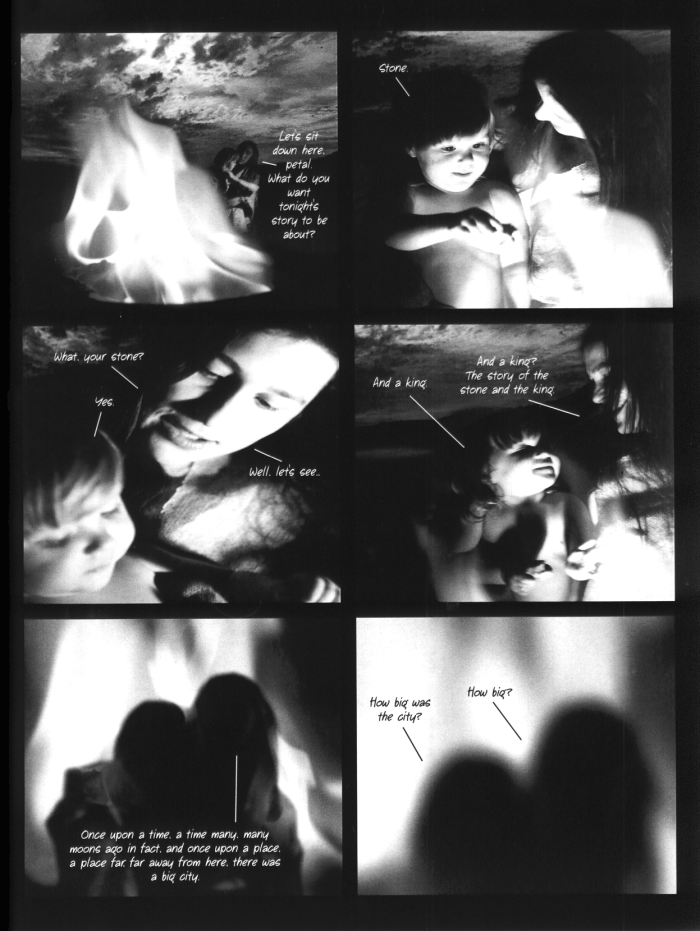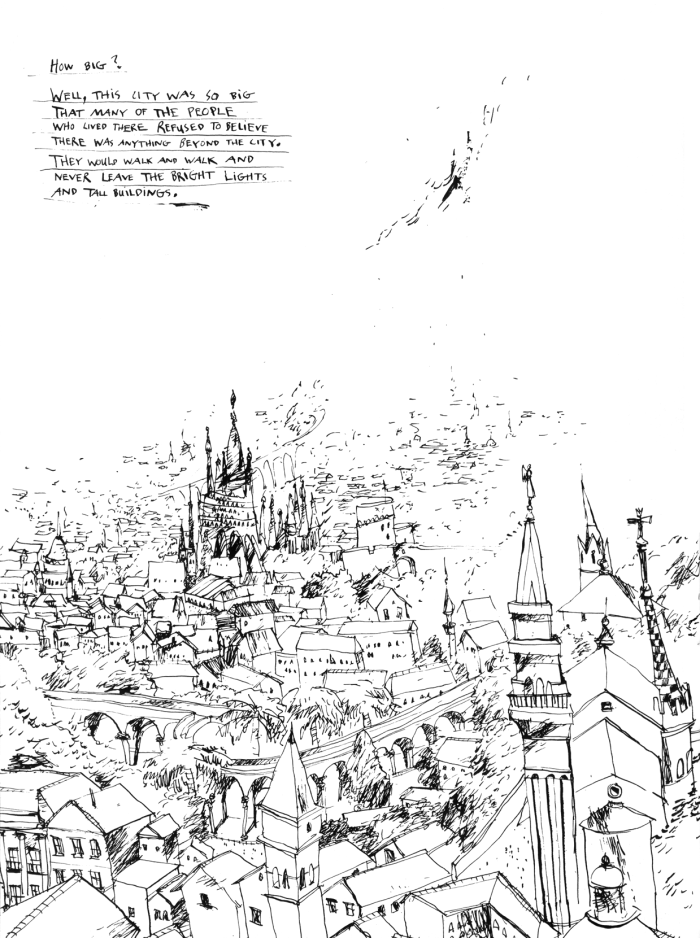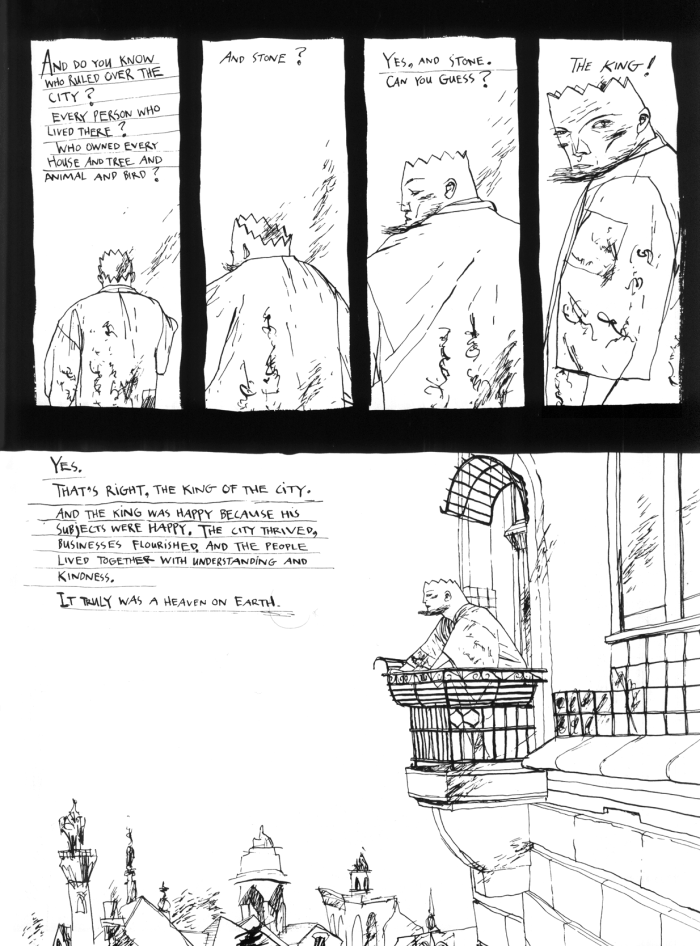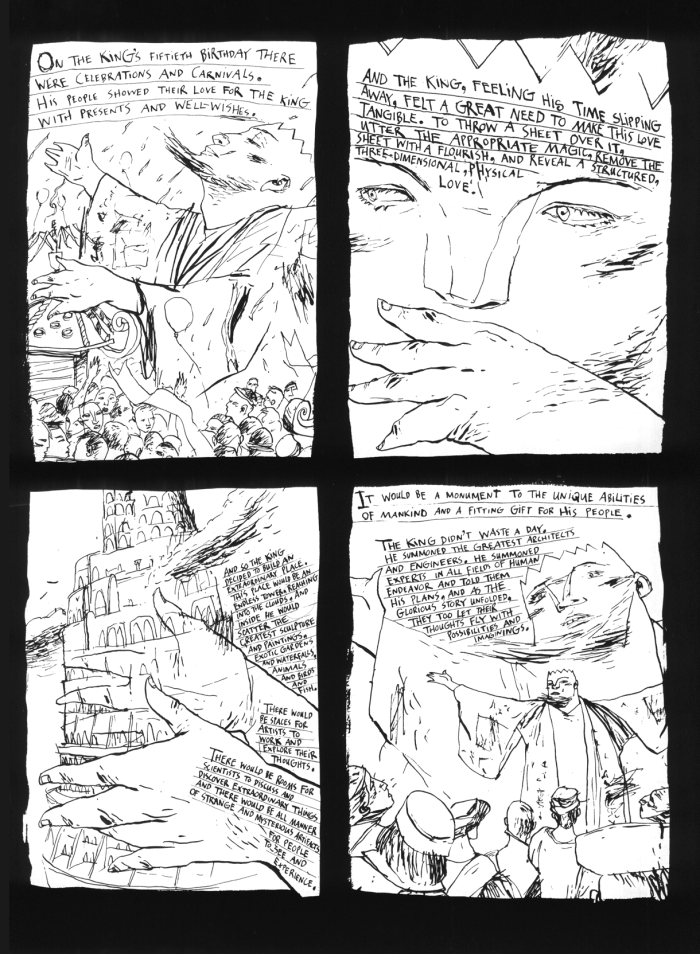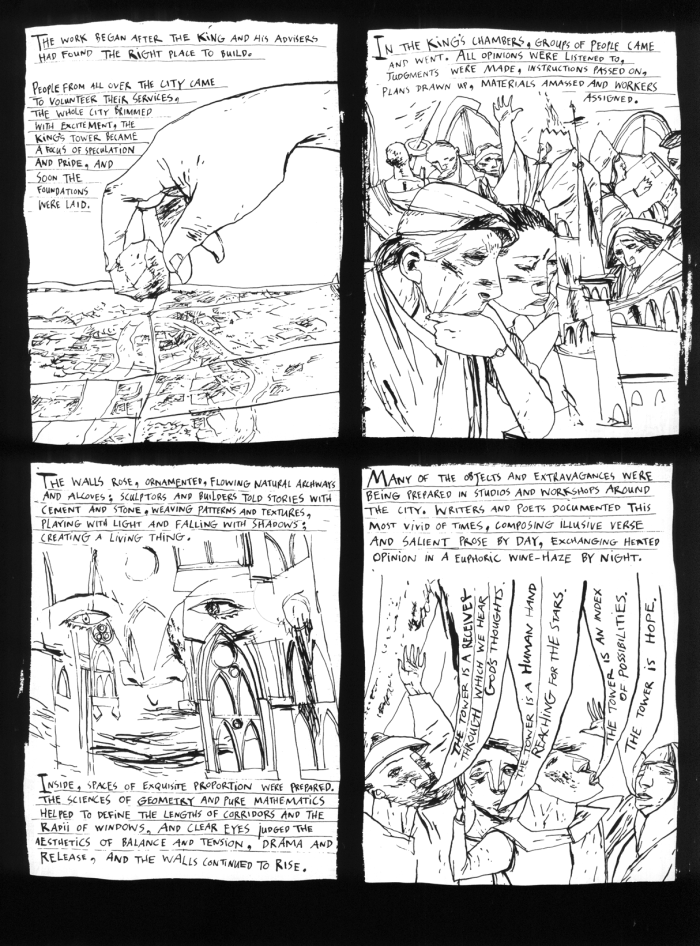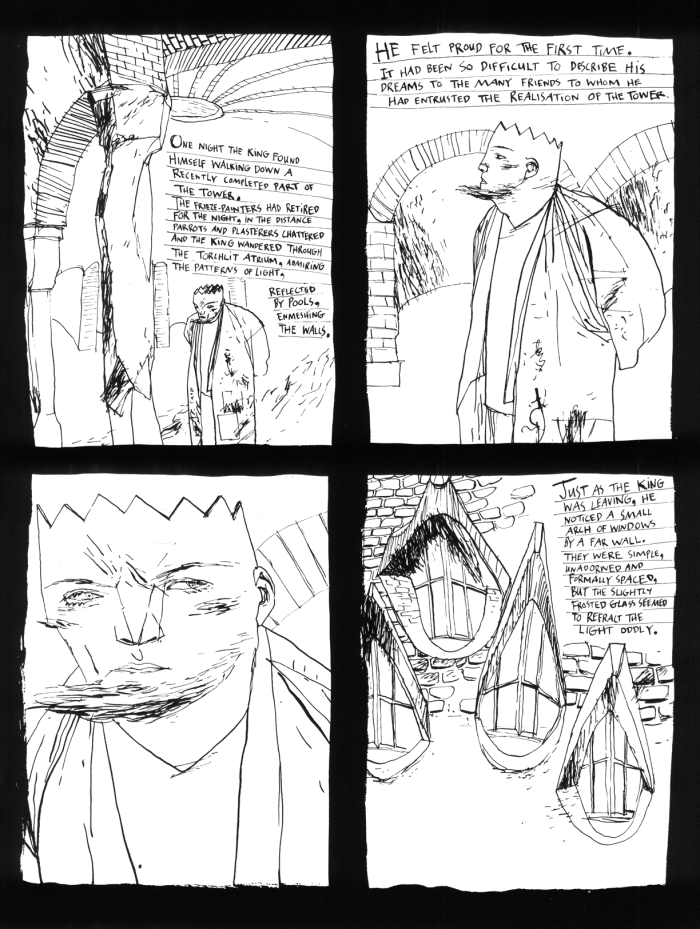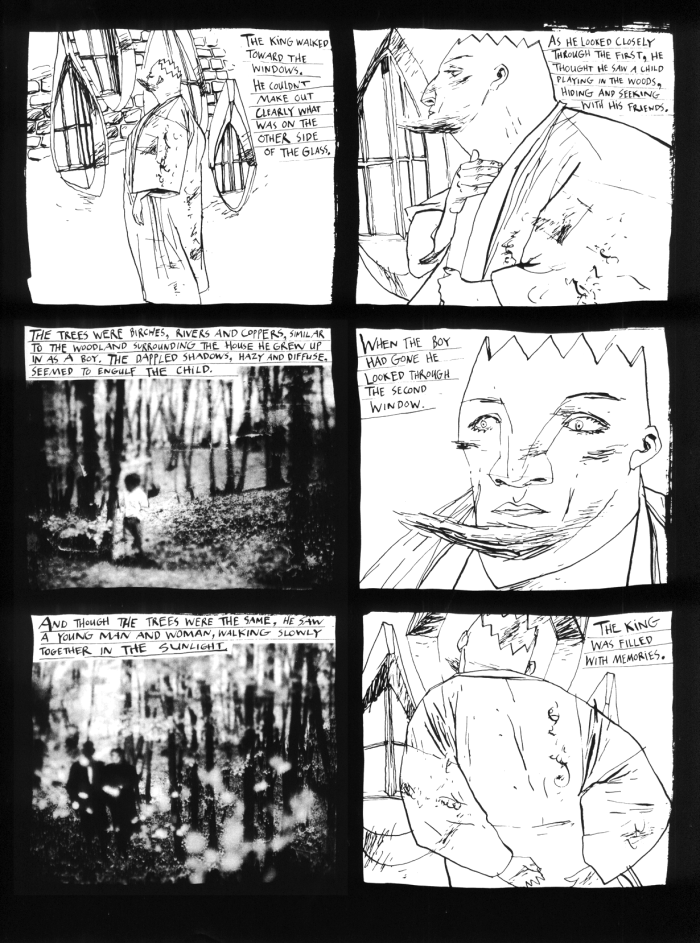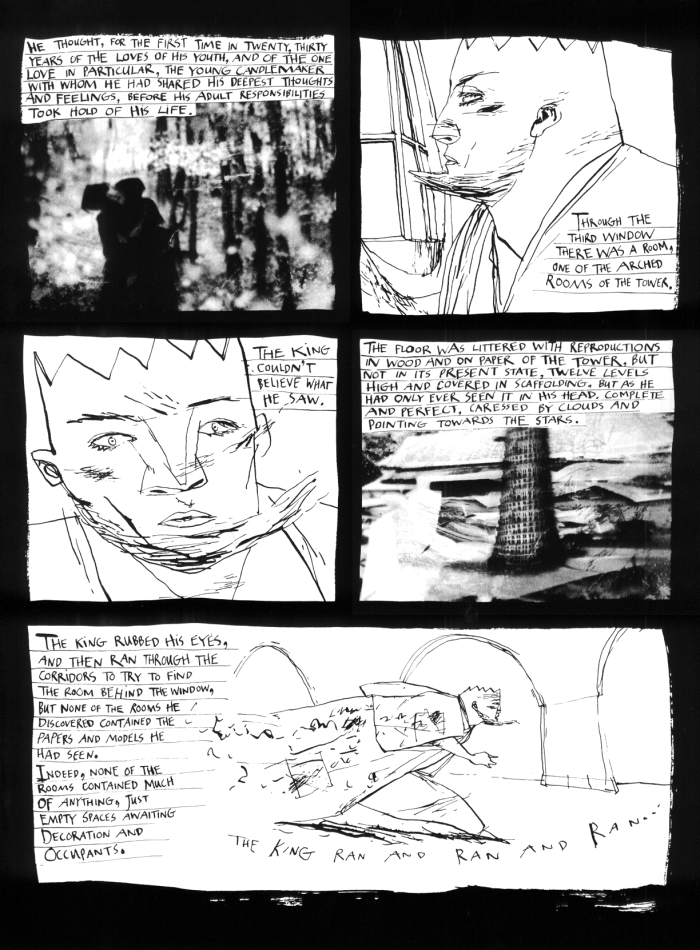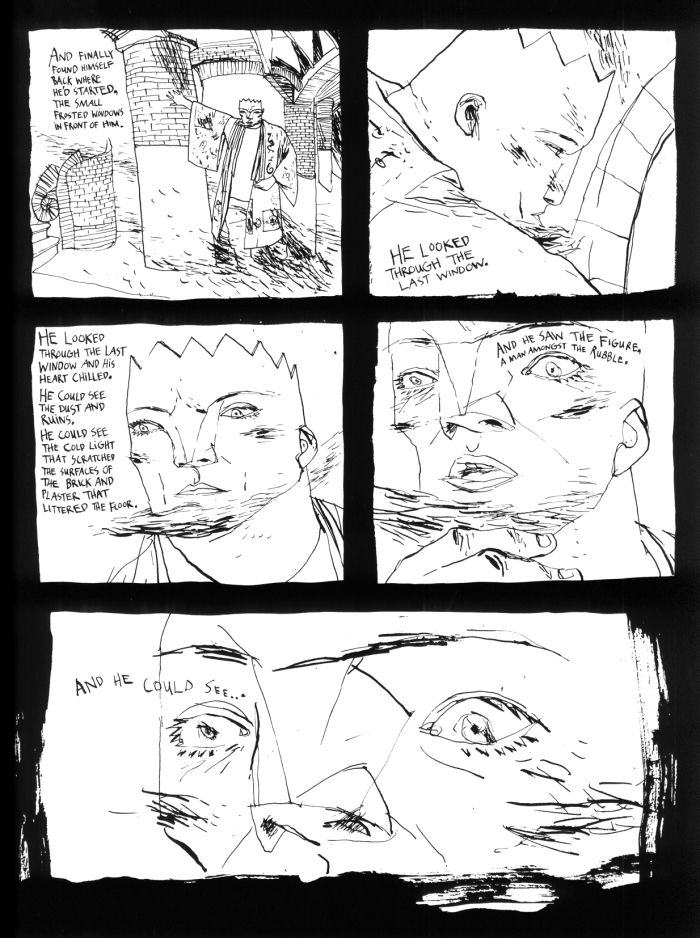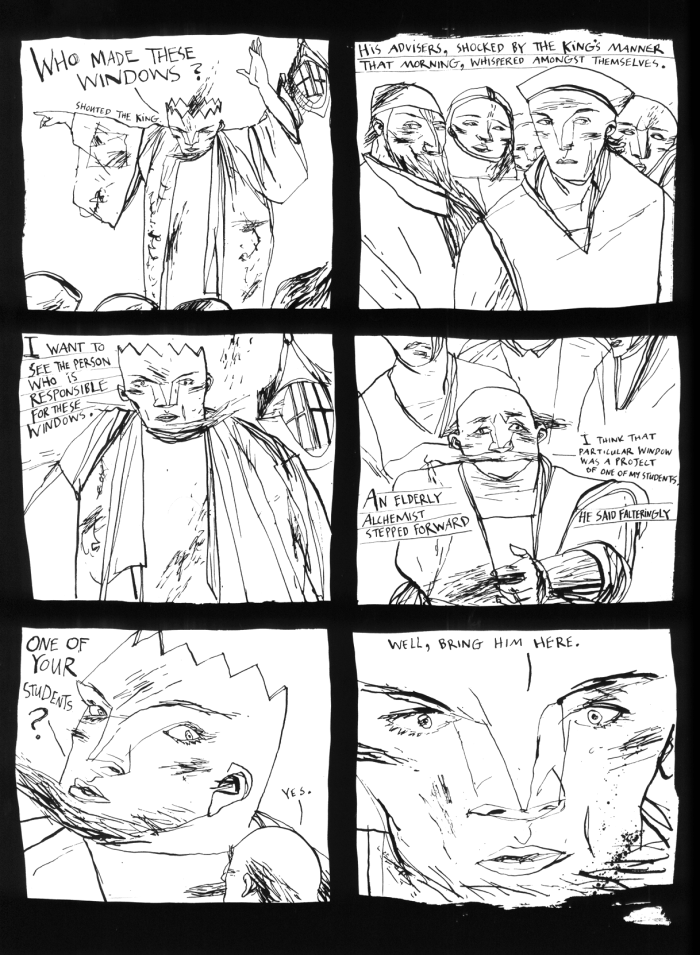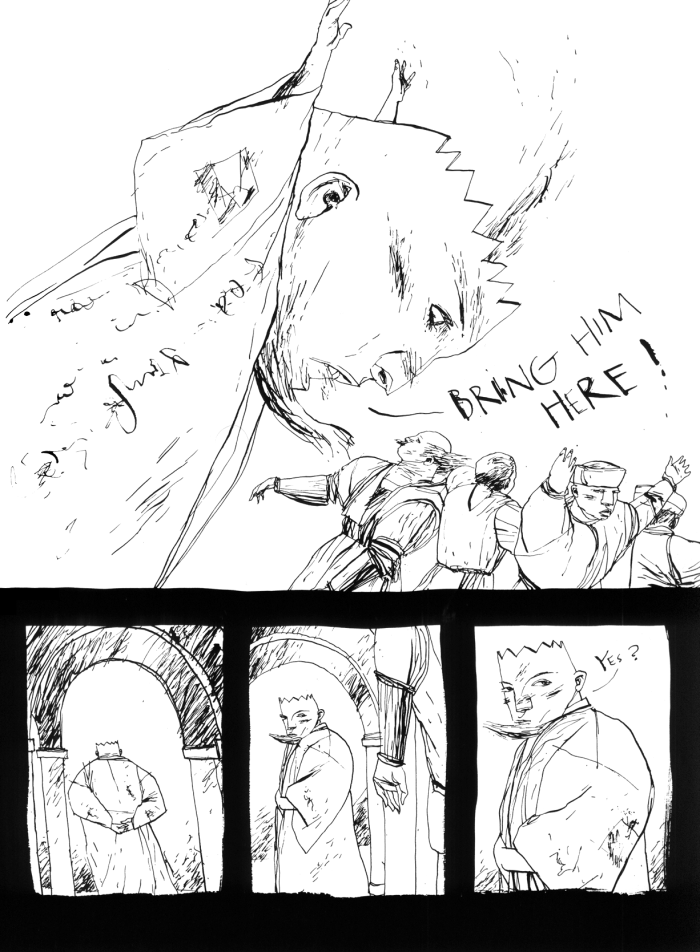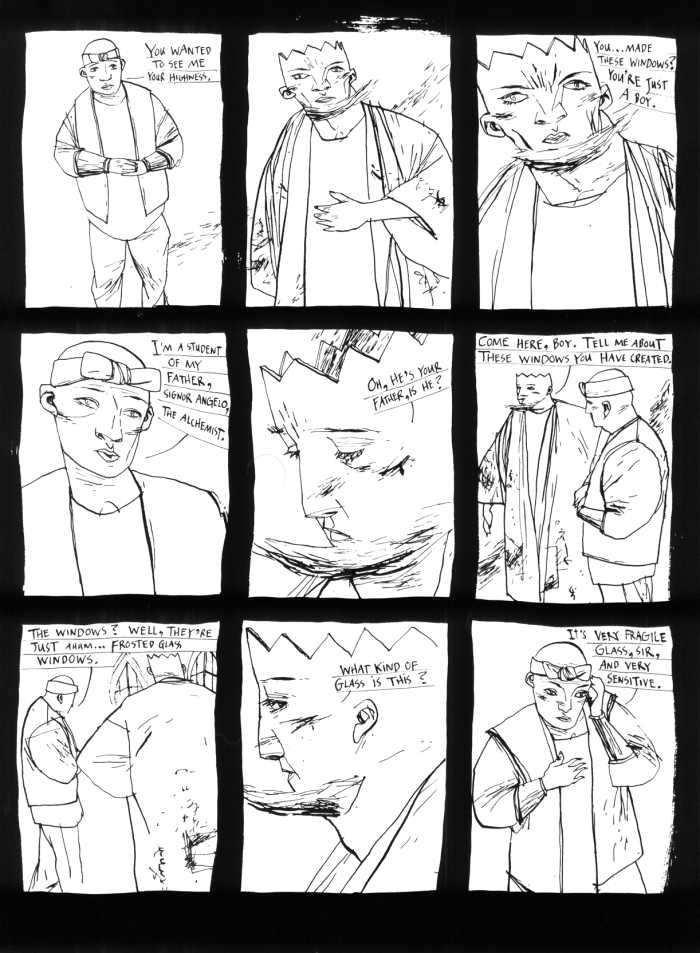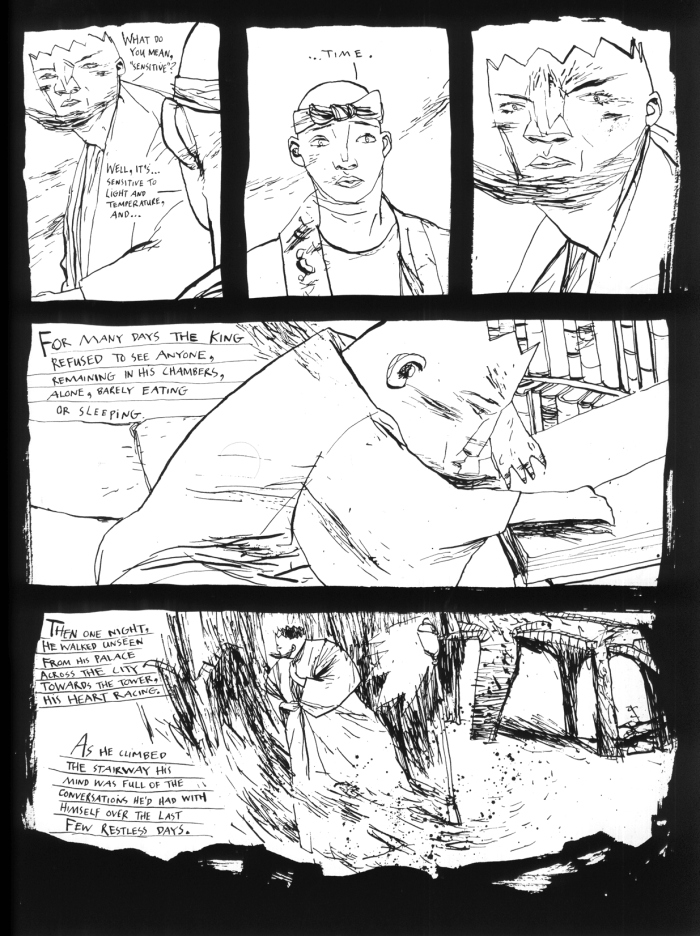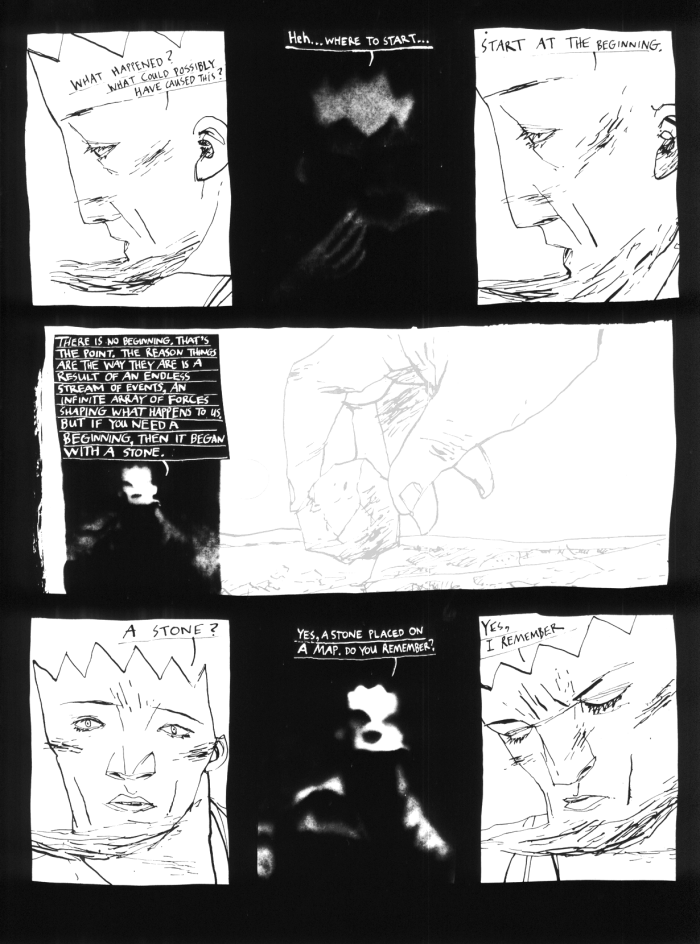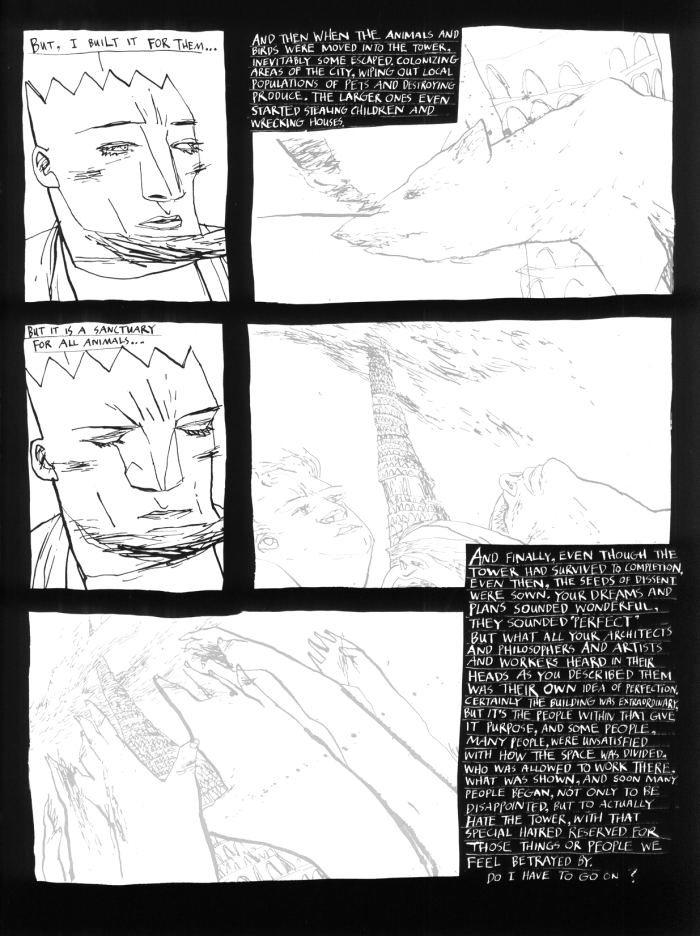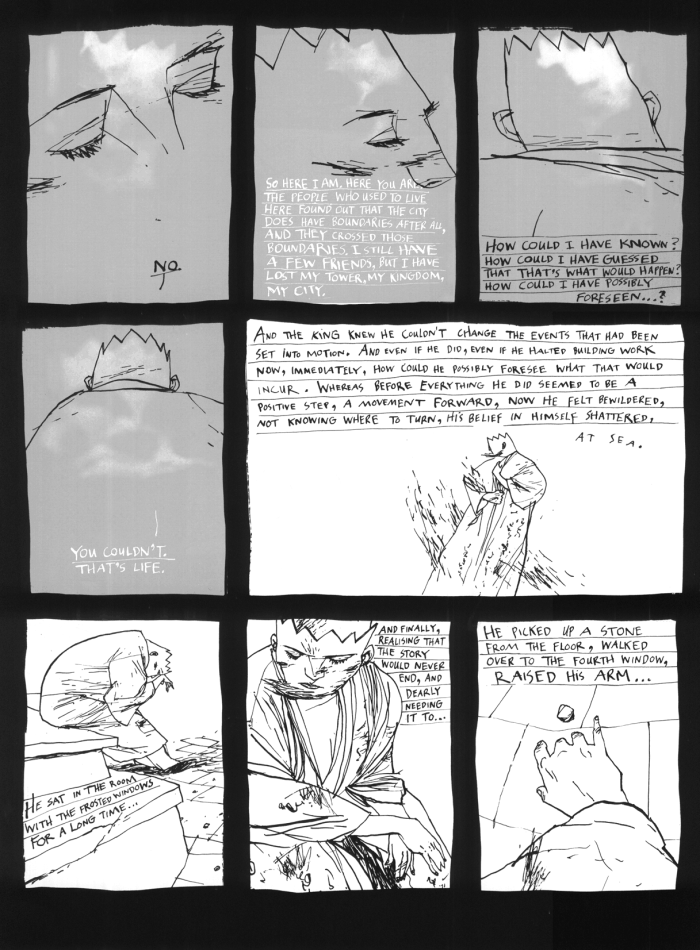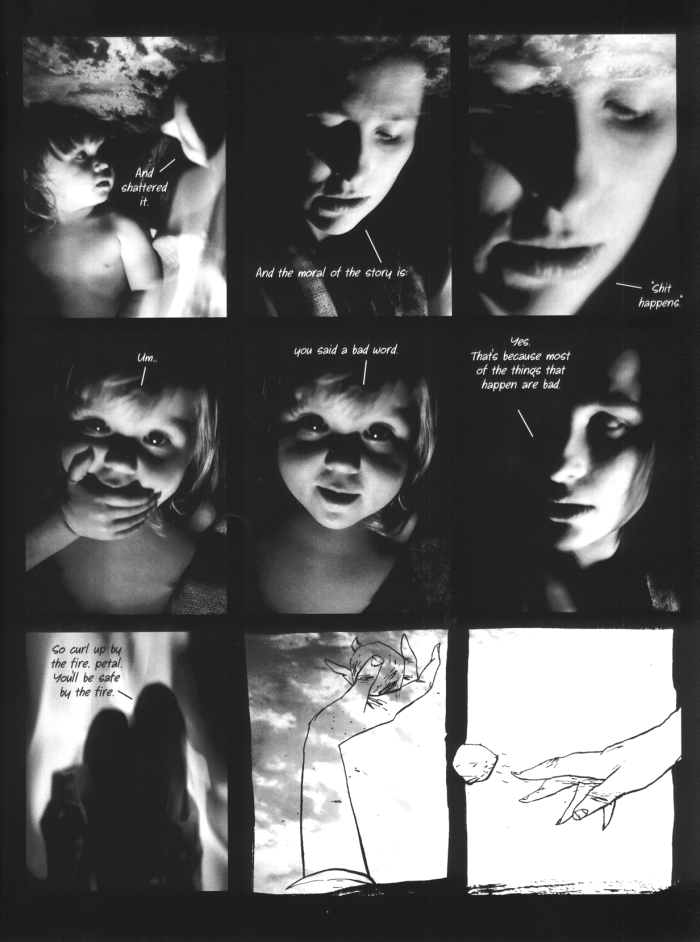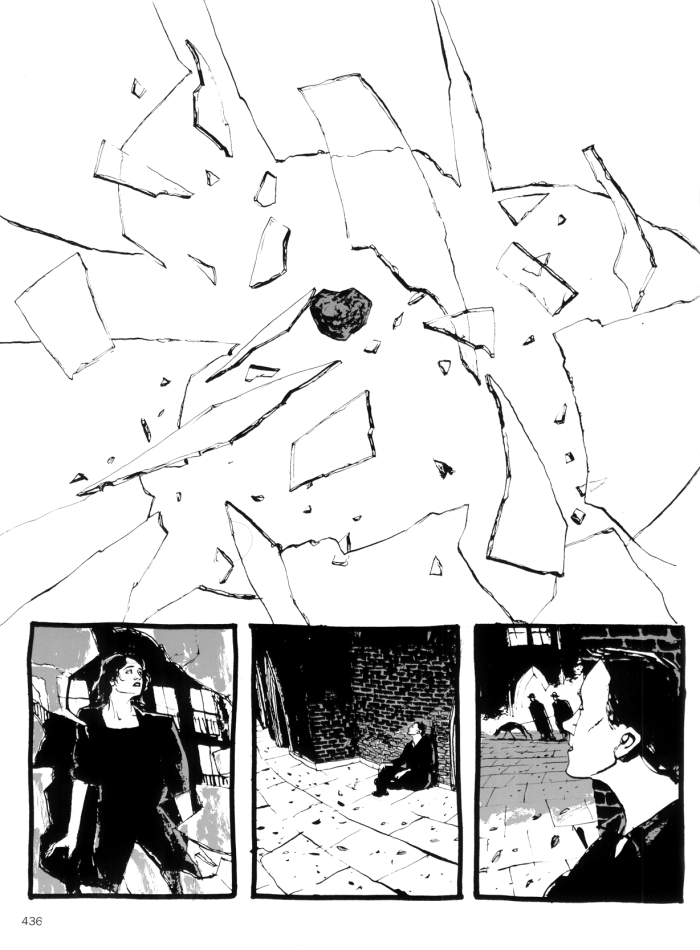It’s somewhat hard to return to a project that was quiet for a few months. To get to it again, and start to think of things that might be interesting to put up here. To again devote some time to write them up and present them to the Tarot community at large. But then, we felt the project deserved more than just join the ever-growing limbo of dead blogs that simply exist on the web, it’s creators to lazy to continue them or too lazy to take them out of the web and put them out of their misery. And so, they linger… Half-dead and half-alive, in a suspended animation state while its creators go on to do other stuff. It happened to us. We went on to do other stuff. And all of us left at the same time. But we also didn’t forget about this blog. And so, we’re back.
As some of you might know, I recently presented a talk at the U.K. TarotCon last September. It’s subject was one that was very dear to me: Tarot and Comics. Two of my favourite subjects. Now that that presentation is over, I thought it would be a nice idea if I wrote here about some of the things that I talked over there, and probably expand upon it. Since this is supposed to be a pretty long post, I’ve divided it in three parts, of which this is part 1. The remaining parts shall be posted in the next few days. If you happened to attend that conference, think of this as a sort of companion piece; if not, just sit back and enjoy the post.
When mentioning tarot and comics, most people will probably think of Promethea. The Alan Moore comic book that started with a Wonder Woman type hero but immediately evolved into an exploration of the Golden Dawn Magickal System. A sort of crash course on tarot and magick. There were 32 issues published and collected in 5 volumes, that you can find here).

What was interesting to the series, is that each issue was based either on a Sephiroth (issues #1-10) or a Major Arcana tarot card (issues #11-32). Of special interest to tarot readers is issue #12, which presents a journey through the Major Arcana tarot cards in 4 different levels. There’s the actual tarot card, created specifically for that issue, as well as a description of the tarot card, how it relates to world history events. But there’s also a word or expression written in Scrabble tiles which is always an anagram for Promethea. And there’s a little anecdote as told by Aleister Crowley divided in 22 parts, with each part attributed to each of the Major Arcana cards. Each page drawn in such a way that when you put them all side by side, you get a giant panel depicting Promethea’s journey through the Major Arcana.
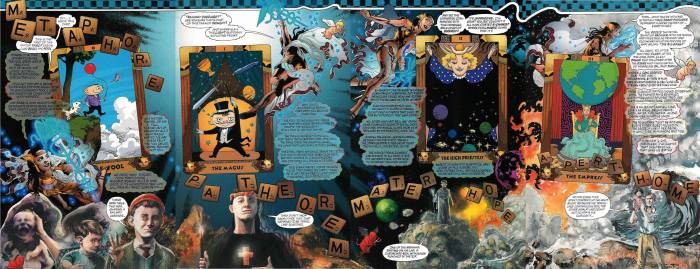
But the book doesn’t end here. In issues #5 through #8 (collected in the first and second volumes of the series), you’ll get a brief exploration of the elements and then, of course, you can browse through all the remaining issues and try to figure out how each Major Arcana helped shape that particular issue. In all, it’s an interesting reading and one that might offer a new perspective to your understanding of the cards.
But comic books have more to offer than Promethea. With this in mind, this presentation started with a comic book published in 1978 called Doorway to Nightmare by DC Comics.

What was interesting in this comic book was the presence of a character, Madame Xanadu, who was a tarot reader. In each issue, someone would stumble into her parlour and have their cards read. According to Jack C. Harris, editor of the series, the tarot cards were such an important part of the series, “they were at the very heart of the idea from the beginning”.
The first issue of Doorway to Nightmare is also worth mentioning because of a text that was published there about the origins of the tarot cards, which is reproduced below. Bill Kunkel, the author, traced the origins of the tarot deck to the fourteenth century and to elements present in Dante’s Divine Comedy. He then goes on to explain how the cards might have evolved and even present a way of reading the Celtic Cross. Now this text does present inaccuracies, and some even blatant, but even so, it is clear that its author tried to present the tarot in a positive light and not as a game to be played at parties for the amusement of guests. Which holds even more value, when one considers that this is a comic book, and as such meant to be read by children and teenagers. Who probably never heard of tarot and, again, probably would forget about it half an hour later after finishing the book.

A few years later, in 1981, a new series starring Madame Xanadu appeared, written by Steve Englehart. Once again, someone comes to Madame Xanadu in search of advice.
It is unfortunate that the first card is wrongly attributed to the Queen of Cups, when in fact, it’s the Princess of Cups. Even so, it is an inspired reading, while it is also interesting to see how the artist, Marshal Rogers framed the sequence, using cards as actual comic book panels and easily leads us through the reading.
Meanwhile, over at Marvel, 1978 saw the release of Marvel Team-Up #76, a comic book which also relies in tarot cards as a story device and does present a Celtic Cross reading. However, it is the cover that is of interest to us, as it features the first time superheroes were depicted as Major Arcanas, with Spider-Man as The Fool, Dr. Strange and his apprentice Clea as The Magician and The High Priestess and Ms. Marvel as The Star. The villain, a sorcerer by the name of Silver Dagger, was represented as Death.

It took almost 30 years, but the first decks featuring characters from comic books were finally here. In 1995, Lo Scarabeo publishes a limited edition Majors-only deck featuring some of Marvel’s superheroes, while at DC, Rachel Pollack and artist Dave McKean put out the Vertigo Tarot, featuring such popular characters as Dream and Death, from Neil Gaiman’s Sandman; John Constantine from Hellblazer, Swamp Thing, Black Orchid, among others.

Nowadays, it’s not so difficult to consider superheroes as archetypes. We have a long history of stories featuring gods and goddesses. For a long time, we used these stories to educate ourselves; to teach us the ways of the world and how to behave in it. As our religious believes changed, so did the stories we told each other. The myths of yesterday started to loose its strength and new stories appeared to substitute them. Stories about extraordinary characters. And stories about people put in extraordinary situations. In 1938, Superman appeared for the very first time. And ever since, kids and teenagers throughout the whole world have once again embraced the idea of super-human power.
Superman can be represent all that’s best in humanity. A being with the powers of god, that only wished to live as a human. A being capable of great deads, that came to our world from another planet. An immigrant, who fought and found its place on Earth whilst never deviating from its moral set of values and believes. Who got its powers from our yellow sun. (For an interesting view on Superman and all that he represents, do check this book). If we were to assign a tarot card to Superman, it would probably be Atu XIX – The Sun.
Looking at the stories behind other popular superheroes, it’s not difficult to find cards that can correspond to them.
With Spiderman, we have a teenager bitten by a radioactive spider. Instead of using his powers for good, he choose to use them for personal gain as a professional wrestler. One day, he could have stopped a burglar, but he choose not to. The same burglar who would murder his Uncle Ben just a few hours later, and teach Spiderman his most valuable lesson:

“With great power comes great responsibility.” Even today, more than 50 years after his first appearance, writers milk this motto to put Spiderman in situations where he must choose between doing the right thing or doing what he wants. His tarot card? The Hanged Man.
With Green Lantern, we get the story of Hal Jordan, a pilot who is presented with a ring capable of transforming his wishes into reality. Imagination becomes Will and Will becomes Form. Or the Magician.

The Hulk is just another variation of the Dr. Jekyll and Mr. Hyde story. A man that harbors within itself a monster that symbolizes the primitive mind. Or The Strength.

With Batman, we have a man who, as a kid saw his parents murdered, his innocence destroyed. That kid vowed to punish evil wherever it might be and grew so obsessed with it that he devoted every single moment henceforth and every single resource at his disposal to acquire the means to actually fulfil his promise. Or The Devil.

And the list goes on… Pick a superhero. Any superhero. Look at his personal history and you can easily find a tarot card that corresponds to him.
But comics can give us much more than just a new take on tarot archetypes. Join us tomorrow, for part two, where we look at the Hero’s Journey, the Minor Arcana, and how can comics make us see the cards in a different manner. In the meanwhile, feel free to browse the archives.




